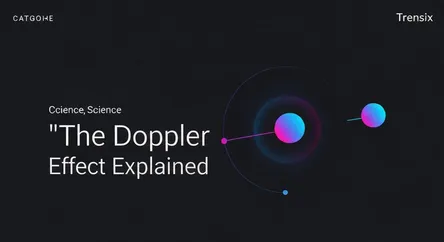Science
The Doppler Effect Explained

Discover the Doppler effect, the change in wave frequency from a moving source, explaining everything from ambulance sirens to the expanding universe.
What is it?
The Doppler effect is the change in the frequency of a wave in relation to an observer moving relative to the wave source. The most common example is the sound of a passing ambulance siren. As it approaches, the sound waves are compressed, leading to a higher pitch. As it moves away, the waves are stretched out, causing the pitch to drop. This principle isn't limited to sound; it also applies to light. When a star or galaxy moves away from us, its light waves are stretched, shifting them towards the red end of the spectrum in a phenomenon known as 'redshift'.
Why is it trending?
The Doppler effect is a cornerstone of modern astronomy and cosmology. It's the primary tool astronomers use to measure the motion of celestial objects. The concept of redshift, a direct consequence of the Doppler effect on light, provided the first concrete evidence that our universe is expanding. Ongoing observations from powerful telescopes, like the James Webb Space Telescope, continue to rely on this principle to map the universe, study distant galaxies, and even detect the subtle 'wobble' of stars that indicates the presence of orbiting exoplanets.
How does it affect people?
Beyond its cosmic implications, the Doppler effect has numerous practical applications on Earth. Police radar guns use it to measure the speed of vehicles by bouncing radio waves off them. Meteorologists use Doppler radar to track the movement of precipitation and wind within storms, improving weather forecasting and tornado warnings. In medicine, Doppler ultrasound technology visualizes blood flow through arteries and veins, helping doctors diagnose conditions like clots and blockages. It's a fundamental concept that powers technology we rely on for safety, health, and scientific discovery.